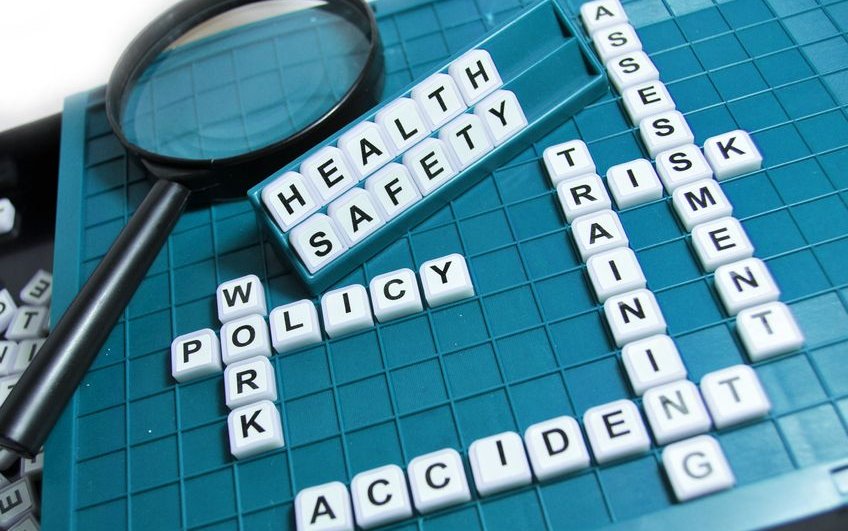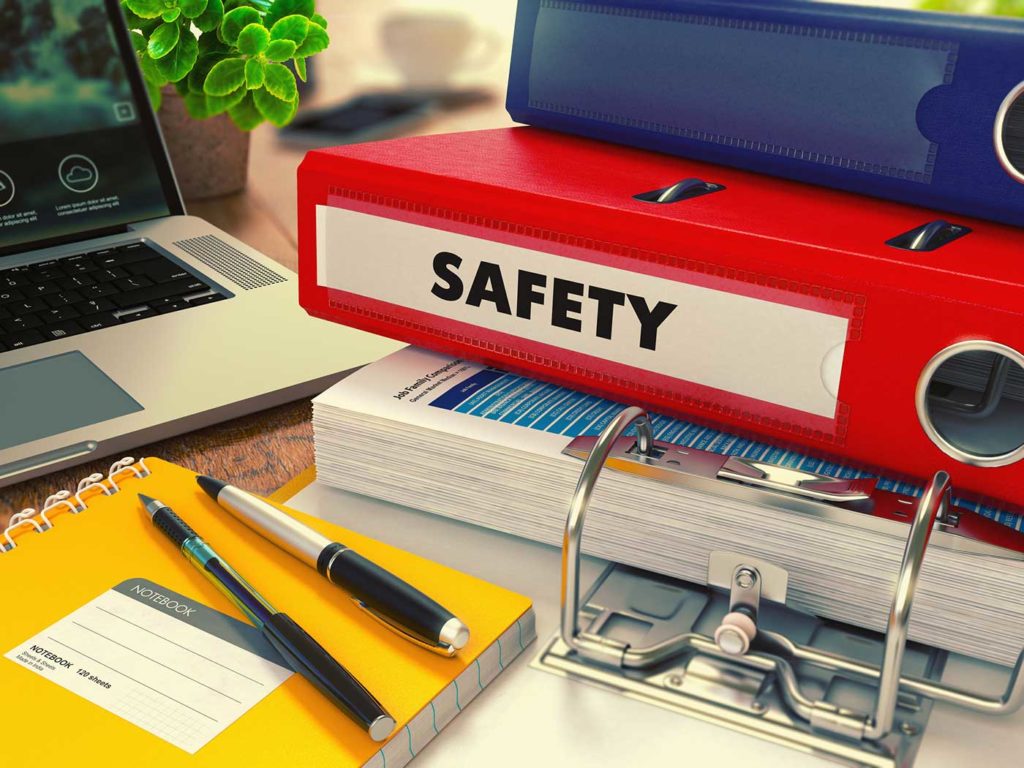BLOG
Health and safety management systems | Employer FAQ
From policies and training to risk assessment, safe systems of work and safety culture, there are many interrelated components to effective health and safety management. For this reason, it’s important that employers establish a system to monitor and measure occupational health and safety performance, and legal compliance, on a regular basis.
But what should a safety management system look like, why is it important to have one, and how can they be implemented?
Here’s what employers need to know.
Blog

What is a health and safety management system?
A health and safety management system, or safety management system (SMS) as it is often shortened to, is a formal system that organisations implement to help them methodically manage the health and safety issues in their work environments.
A safety management system involves taking a systematic approach to managing health and safety through organisational policy, goals, planning, structure accountability and safe operating procedures. In simple terms, a safety management system refers to a series of policies and procedures that organisations use to reduce accidents and illnesses among employees and those affected by the organisation’s activities.
As a small company, you may not need a formal framework to manage your firm’s health and safety risks. However, as you grow, it will become important to set up a comprehensive and formalised safety management system.
Safety management systems are maintained and continuously improved through monitoring and revision.
Related Information



Safety management system examples
A safety management system is more than a manual and set of procedures; it is a proactive and integrated approach to health and safety management that integrates health and safety into an organisation’s day-to-day activities.
Examples of formal management systems or frameworks that help organisations to manage health and safety include:
- International and national standards, such as:
- Occupational health and safety management system ISO 45001:2018. This is a new international standard which focuses on risk, not simply on compliance. It aligns with the quality management standard ISO 9001 and environmental management standard ISO 14001.
- Quality management system BS EN ISO 9001:2015.
- In-house standards, procedures or codes.
- Sector-specific frameworks, such as:
- The Energy Institute’s high-level framework for process safety management.
- The Chemical Industries Association’s Responsible Care framework.
Why is a safety management system important?
While organisations are not required by law to implement ISO 45001 or other similar management standard, every employer must ensure that they effectively plan, organise, control, monitor and review the preventive and protective measures that have in place for health and safety. Where the employer employs five or more employees, there must be a record of these arrangements made.
It therefore follows that a safety management system will help in achieving the requirements of the law and set out ways to proactively and effectively:
- Identify workplace health and safety hazards and risks;
- Promote a positive health and safety culture;
- Monitor and measure health and safety performance;
- Prevent health and safety incidents;
- Respond to incidents;
- Report and document incidents; and
- Prevent future incidents occurring through the review of health and safety performance.

What are the components of a safety management system?
While each safety management system is unique, they will typically have four key components and several adjoining elements:
- Plan: Developing a policy and a plan to implement the policy – Under the Health and Safety at Work etc Act 1974, organisations with five or more employees must have a written Health & Safety Policy. This should establish senior management’s commitment to continually improve safety, as well as define the methods, processes, and organisational structure needed to meet safety goals. In the HSE‘s words, it outlines “who does what, when and how”. Important areas to cover include:
- Statement of Intent;
- Responsibilities for managing health and safety;
- Arrangements for health and safety;
- Arrangements for monitoring performance; and
- Emergency response planning and cooperation with those sharing your workplace.
- Do: Risk profiling, organising for health and safety and implementation of the plan – This deals with the implementation of the policy and includes:
- Identifying your risk profile;
- Organising activities to deliver your plan, including providing adequate resources, communicating with workers and obtaining competent advice where required; and
- Implementing your plan.
- Check: Measuring performance (proactively and reactively) – This is about evaluating the continued effectiveness of implemented risk control measures and supporting the identification of new hazards. Are arrangements and processes properly applied, and do they continue to achieve their intended objectives? This will involve:
- Procedures and instruction;
- Monitoring checks (proactive);
- Investigating accidents, incidents, ill health and near misses (reactive); and
- Workplace inspections and audits.
- Act: Reviewing performance and acting on lessons learned – The health and safety management system will require regular review in order to implement the lessons learned and reflect changes in work practices, equipment and legislation. In practical terms, this encompasses:
- Reviewing incident and ill-health records;
- Reviewing risk assessments and safe systems of work to ensure that they are still suitable and sufficient for the activities being carried out; and
- Implementing changes in legislation and best practice in line with industry standards.
How do I implement a health and safety management system?
The following three-step approach can be taken to set up a safety management system:
1. Profiling your risk
The first step in developing a safety management system is to identify your organisation’s health and safety risks, rank them in order of importance, and take action to control them. This means thinking about health and safety law and understanding the specific regulations that apply to your organisation based on your work activities and industry.
In order to achieve this, organisations should:
- Identify the nature of risks they face;
- Identify the likelihood of adverse effects as a result of the risks;
- Measure the level of disruption likely to be caused by the risks;
- Evaluate the costs associated with the risks faced;
- Measure the effectiveness of the existing control in managing the risks;
- Record their findings; and
- Provide health and safety surveillance where required to check the effectiveness of existing controls.
2. Organising for health and safety
In order to achieve positive health and safety outcomes, the following will need to be implemented:
- Controls within your organisation, which also includes the management of contractors;
- Cooperation between employees, their representatives and managers;
- Communication across the entire organisation; and
- Competence of the workforce to carry out their activities safely.

3. Implementing your plan
Implementation is a sustained process and includes:
- Deciding on the preventive and protective measures needed and putting them in place;
- Providing adequate tools and equipment for tasks and keep them maintained;
- Providing training and instruction to those carrying out the activities; and
- Implementing adequate levels of supervision to ensure that the arrangements are being implemented.
Regardless of an organisation’s size or type, the best safety management systems apply a common-sense approach based on a thorough understanding of the specific hazards and risks that the organisation faces on a daily basis.
Let us do the hard work for you
From an on-site audit to check that your arrangements are being applied effectively, to a robust policy (plan), risk assessment support (do), award-winning monitoring software (check) and our Knowledge Hub and regular policy reviews (act), our comprehensive, fixed-fee Health & Safety support contains all the components you need to build and maintain an effective safety management system.
To find out how Ellis Whittam can help you to raise standards and stay on top of safety management and compliance, call 0345 226 8393 or request your free consultation using the button opposite.
Sign up for the latest news & insights
Resources
Latest News & Insights

Work from wherever? | Things to consider before allowing employees to work from abroad
BLOG Written by Alexandra Farmer on 25 May 2022 A few years ago, the idea of working from anywhere in the world seemed like a pipe dream.

Reduced workforce? Here’s 5 health and safety areas you need to revisit
BLOG Written by Charles Spencer on 18 May 2022 In 2022, a growing number of businesses have moved, or are in the process of moving,

Fee for Intervention | Why health and safety breaches could cost your business more in 2022
BLOG Written on 16 May 2022 It’s a well-known fact that poor health and safety practices cost businesses money. And with the HSE recently announcing yet another

Remote work isolation | How employers can help combat loneliness
BLOG Written on 12 February 2021 While the benefits of remote work are seemingly boundless, often overlooked is the isolation and disconnectedness that it can

Time off for getting married or moving house
BLOG Written on 12 May 2022 There are certain big life events that can sometimes get in the way of work. Whether it’s a wedding

Recent cases highlight continued work at height failings
BLOG Written on 6 May 2022 Working at height continues to be the leading cause of work-related fatality. According to most recent HSE figures, these

Managing organisational change | How to keep people happy
BLOG Written on 28 February 2022 In the direst of circumstances, humanity’s true capacity for adaptation and perseverance can be realised. Where the business world

5 ways to combat 2022’s recruitment challenges when you can’t pay more
BLOG Written by Christian Vincent and Hannah Copeland on 15 April 2022 In 2022, recruitment and retention are fast becoming employers’ biggest challenges. With people

A war of words | Managing employees’ political views on the Russia-Ukraine conflict
BLOG Written by Lesley Rennie on 13 April 2022 The war in Ukraine, and the daily news reports of fatalities, continues to spark conversation in


